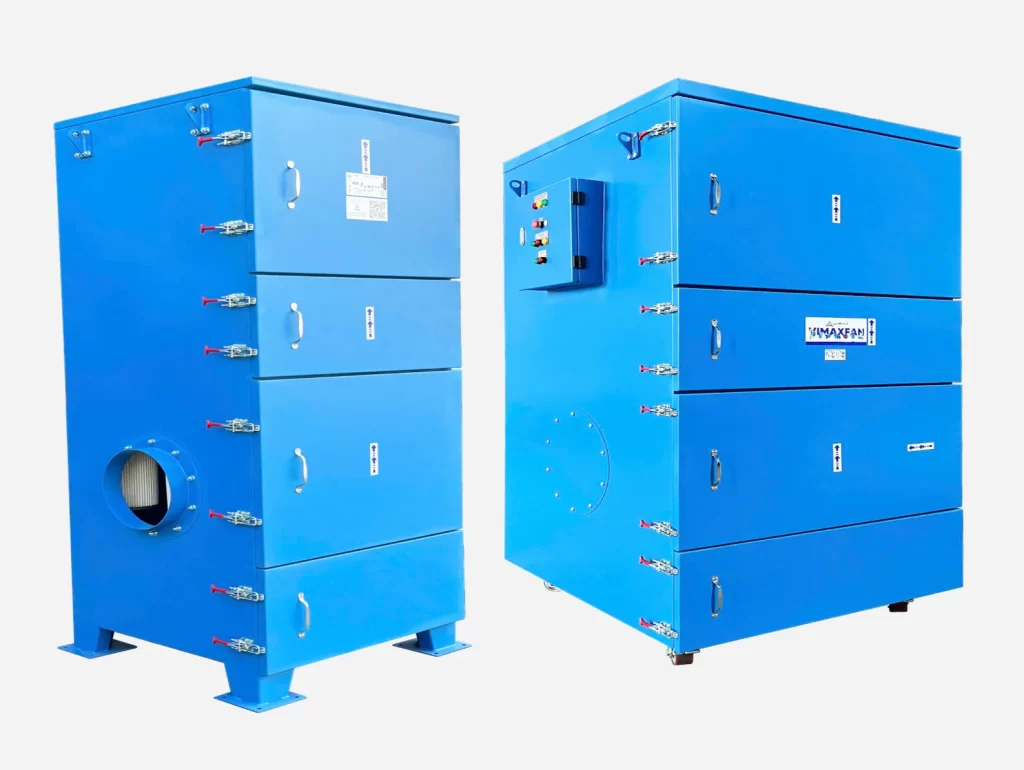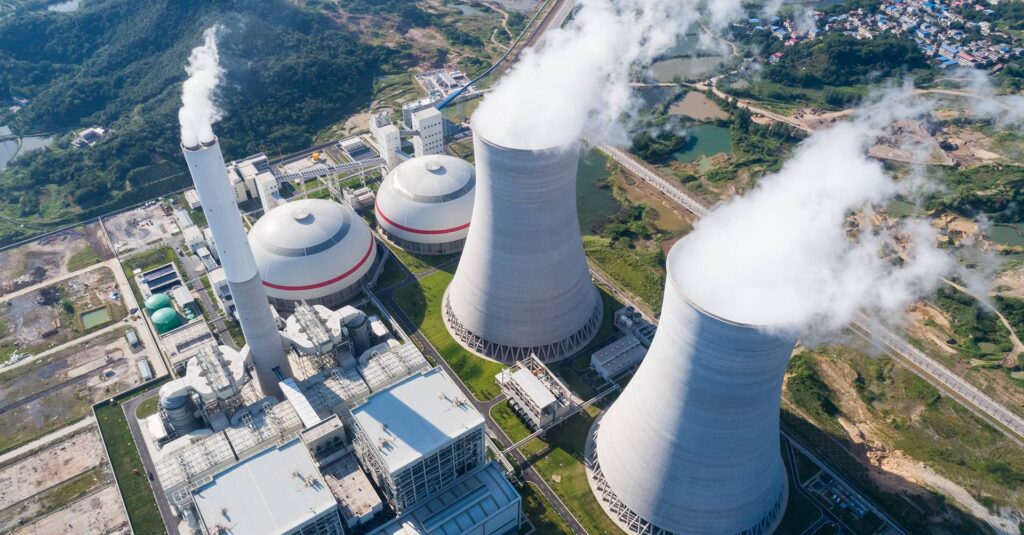The Energy & Power Systems industry requires highly efficient cooling, ventilation, and air filtration solutions to maintain optimal performance and ensure workplace safety. Industrial fans play a crucial role in thermal management, air circulation, exhaust gas control, and combustion support across various energy generation and distribution processes. Below are key applications of industrial fans in this sector.
1. Cooling Systems in Power Plants (Thermal, Nuclear, and Renewable Energy Facilities)
Power plants, whether thermal, nuclear, hydro, or renewable, generate immense heat during energy conversion processes. Effective cooling systems are essential to prevent overheating of turbines, generators, and other critical equipment.
-
Forced-draft (FD) and induced-draft (ID) fans assist in circulating air through cooling towers, removing excess heat.
-
Axial and centrifugal fans help dissipate heat from power transformers, preventing malfunctions and extending their lifespan.
-
In nuclear power plants, ventilation systems ensure the cooling of reactor cores and containment areas, maintaining safety standards.
-
Wind and solar farms also require cooling solutions for battery storage systems and inverters to optimize energy output.
2. Air Circulation and Ventilation in Power Generation Facilities
Power plants and energy facilities require constant airflow to maintain safe working conditions and optimize efficiency. Poor air circulation can lead to dust accumulation, heat buildup, and increased equipment wear.
-
High-volume industrial fans ensure a fresh air supply in control rooms, turbine halls, and generator stations.
-
Exhaust and ventilation fans remove heat, moisture, and toxic gases from boiler rooms and combustion chambers.
-
Pressurization fans in confined areas (such as underground power stations) prevent the build-up of harmful gases and improve worker safety.
3. Exhaust Gas Control in Fossil Fuel and Biomass Power Plants
Coal, oil, and biomass power plants produce combustion gases, which must be efficiently extracted and treated to comply with environmental regulations.
-
Induced-draft fans (ID fans) draw exhaust gases through electrostatic precipitators (ESPs), scrubbers, and flue gas desulfurization (FGD) systems to remove pollutants before they are released into the atmosphere.
-
Blower fans assist in controlling air-to-fuel ratios, ensuring complete combustion and reducing emissions.
-
High-temperature exhaust fans remove particulate matter, sulfur dioxide (SO₂), nitrogen oxides (NOₓ), and volatile organic compounds (VOCs), reducing air pollution.
4. Combustion Air Supply in Boilers and Furnaces
Many power plants rely on boilers and furnaces for steam and energy production. These systems require a steady supply of oxygen-rich air to achieve efficient fuel combustion.
-
Forced-draft (FD) fans supply preheated air to the burners, enhancing combustion efficiency and reducing fuel consumption.
-
Primary and secondary air fans regulate airflow into boilers, optimizing energy output and minimizing emissions.
-
In biomass and waste-to-energy plants, industrial blowers help distribute airflow, ensuring uniform combustion of organic materials.
5. Dust and Fume Extraction in Power Equipment Manufacturing & Maintenance
The manufacturing and maintenance of power generation equipment (such as turbines, generators, and transformers) produce large amounts of metal dust, fumes, and airborne particles.
-
Dust collection systems with industrial fans prevent contamination in welding, cutting, and grinding areas.
-
Fume extraction fans remove toxic gases from welding and metal processing, improving workplace safety.
-
HEPA-filtered ventilation systems maintain clean air quality in transformer assembly plants and battery storage facilities.
6. Ventilation in Energy Storage and Battery Facilities
With the rise of renewable energy storage solutions, battery cooling has become a critical challenge for the industry.
-
Cooling fans prevent overheating in large-scale lithium-ion battery storage systems, reducing the risk of thermal runaway and fire hazards.
-
Explosion-proof ventilation fans are essential in hydrogen fuel cell facilities, where proper airflow prevents hydrogen gas accumulation.
-
Air purification systems with industrial fans filter electrolyte fumes in battery manufacturing plants, ensuring worker safety.
7. Airflow Optimization in Wind and Solar Power Plants
-
Wind turbine cooling systems use industrial fans to regulate generator temperature, preventing overheating and increasing efficiency.
-
Solar panel manufacturing plants require cleanroom environments, where filtered air circulation fans remove dust particles that could affect panel quality.
-
Air-cooled condensers (ACC) with axial fans replace water-based cooling systems in dry cooling power plants, reducing water consumption.
Conclusion
Industrial fans are indispensable in the Energy & Power Systems industry, contributing to cooling, ventilation, exhaust gas treatment, and combustion efficiency. By integrating high-performance fan systems, power plants and energy facilities can enhance equipment longevity, environmental compliance, and operational safety, ensuring stable and efficient energy production.

